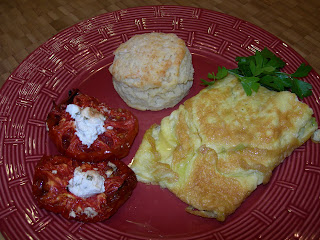
I really do love to cook. I miss it when restaurant engagements get in the way. This week we are eating out five nights out of seven. Most weeks we eat out once or twice at the most. So you can imagine my delight that finally Monday to Wednesday I get to cook. Yippee! I am both pleased and excited. Don’t get me wrong, I love eating food I might not otherwise fix for myself, like deep-fried squash blossoms. I love having more time to work on my to-do list or to—shock—sit still for a moment. But if given a choice, I would much rather cook than eat out. I love both the process (the preparation) and the product (eating what I have prepared).
I love the creativity involved in cooking. I love creating a menu where the colors, textures and flavors work well with each other. I love imagining what the plate will look like with the food on it. I love choosing the dinner plate that best sets off the food. I love thinking about the best wine to go with the food.
I like being in control of the process: from deciding what I want to eat that evening, to buying the ingredients and preparing the food. If I’m hungry for steak, I can choose to fix it.
I love using up leftovers in imaginative ways, looking for recipes that use the little bits and pieces of fruits and veggies we all have in our fridges.
I love the challenge of cooking: figuring out the timing and the work flow. When do I need to start the preparation in order to get dinner on the table at 7:00? What is the most efficient and easy way to get the task accomplished? What can be made ahead? How can all the dishes come to the table at the same time?
I also like the challenge of dealing with food preferences, allergies, kids’ likes and dislikes, what’s available in my market and in season, the amount of time and money I have to spend, etc. I have to think really hard when someone can’t eat sugar, wheat, dairy products, eggs, or red meat. Coming up with a great dinner is exhilarating when faced with constraints—and there are always some constraints.
I love trying new recipes, cuisines, techniques, and exotic ingredients. Early on in my cooking history, the part of me that loved learning got engaged and found in cooking a new and endlessly fascinating activity.
 |
| Mindful Cooking at FCCB |
I love being in the kitchen, quiet and alone, slicing carrots. Cooking as meditation. It knits me up. Being in the present moment—particularly important when the task involves sharp knives. Years ago I taught a Meditative Cooking class at First Congregational Church of Berkeley. Fourteen of us gathered in the church kitchen and cooked dinner quietly. Only whispered questions about recipes were allowed. A hush would come over the kitchen. It was really quite marvelous.I love eating good food and cooking for myself is the least expensive way to get it. For a long time when I was much younger, I couldn’t afford to go out to dinner very often and there was no choice but to cook. I figured that as long as I had to cook, I might as well have some fun with it and make it interesting. I still value the economy of cooking at home.
I wanted my kids to grow up to appreciate home-cooked meals and good food. I must say they didn’t always share my definition of “good” and would end up eating cereal. But they have grown to be both good cooks and adventurous eaters.
I like cooking for small dinner parties and sharing good food with friends and family. I especially love the conversations that happen around a dinner table at home. I think home-cooked food nurtures these conversations.
I love eating by myself or with Katherine. I really care about what food I put on my plate and in my mouth. I want my dinners to be interesting, beautiful, colorful, and delicious. Sometimes complicated, sometimes simple. Both just fine.
What about you?























